
User statistics provide important information to business owners about how well their website is doing. Bounce rate and exit rate are two significant metrics that you should monitor closely.
We spent a lot of time discussing bounce rates, but Google Analytics has another interesting metric to offer: exit rates.
Unfortunately, the two metrics are frequently misunderstood and misused interchangeably, despite the fact that it is their small nuances that distinguish them as relevant metrics.
This chapter will explain the differences between bounce rate vs exit rate, the significance of the two metrics, and how to lower page’s exit rate.
I. All You Need To Know About Bounce Rate
1. What Is Bounce Rate?
A bounce occurs when a visitor arrives on your website and exits from the landing page without visiting any other pages on your site.
The higher the bounce rate, the more bounces there are. Bounce rates are the percentage of single-page sessions.
The picture below depicts a customer enters and exits a web page.

Source: Canonicalized
According to Google, “a bounce is a single-page session.” A bounce might be triggered by any number of events:
- Returning to search results
- Closing the browser
- Entering a new URL in the address bar
- Following an outbound link
- clicking the back button taking him to the previously visited site
- Staying inactive and timing out the session
- Reading the entirety of a page but not triggering any events, and then leaving
2. What Is a Good Bounce Rate?
Pages with bounce rates ranging from 56 to 70% should raise any business leader’s eyebrows and prompt more investigation. An average bounce rate would be between 41 and 55 percent. Before evaluating whether high bounce rates are a terrible sign, keep in mind the broader picture as well as both page and user intent.
3. Why Is Bounce Rate Important?
Every digital marketing practitioner, whether in SEO, CRO, copywriting, content marketing, analytics, or UX, will have to explain bounce rate to concerned clients at some point.
A high bounce rate typically indicates issues with user satisfaction – whether in terms of content, site quality, loading speed, or other factors.
Bounce rate only records user losses when users arrive at that page directly.

Source: CXL
4. How To Calculate Bounce Rate/ How To Find Bounce Rate In Google Analytics?
Bounce rate is calculated by dividing total sessions by single-page users and multiplying by 100.
In other word, bounce rate is determined by calculating the number of bounces over the total number of pageviews to a page
You can find the average Bounce Rate in the Audience – Overview report.
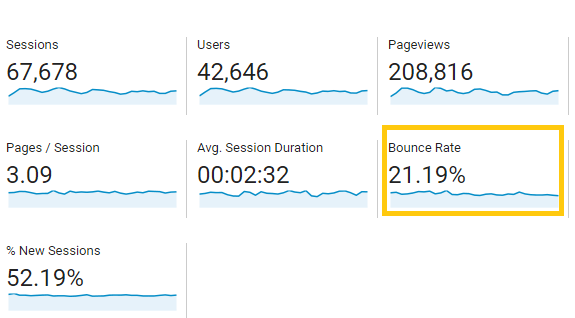
5. What Causes High Bounce Rate and How To Decrease Bounce Rate?
- intrusive pop-up ads, music;
- longer load time of pages (people give up after approximately 10 seconds);
- irrelevant content to what they are looking for;
- poor design, difficult to read fonts;
- not easy to use website;
So, if you have a blog, or a simple presentation site, or Q&A, you will notice higher than average bounce rates.
Sites with high bounce rates, such as StackOverflow or Quora, will always have them. People get the information they need on their first visit and then leave.
Is this to say that the sites are bad? Certainly not!
For websites with a high bounce rate, the time a person spends on the website may be misrepresented.
You should keep in mind that visitors may desire to return to your website.
That being said, you can simply disable the effects of irritating first-impact elements such as unwanted noises or big pop-ups. External links should be opened in new tabs to avoid disrupting the session. Keeping external links to a minimum is also a smart idea.
Next, add hyperlinks to relevant information to that first page and create a readable, easy-to-use menu.
Above all, the content should be related to what your visitors expect to see on the first page.
II. Then, What Is Exit Rate And What Should You Know About It?
1. What Is the Exit Rate?
Exit rates are the percentage of users who leave a website without viewing any additional pages.
After visiting any number of pages on your site, the exit rate represents the percentage of visitors who navigate off to another site from a specific page.
Assume a visitor lands on your website, then navigates to a particular page, then another, then another, and finally exits.
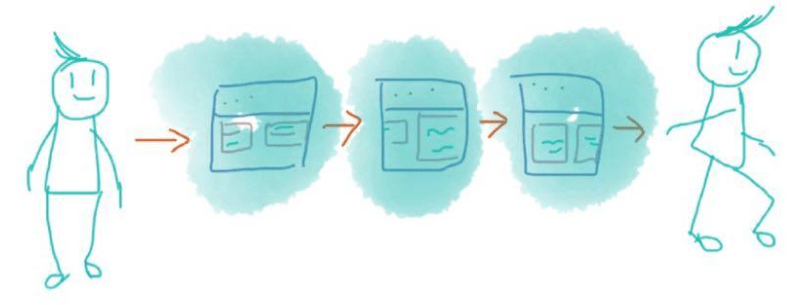
Source: Canonicalized
The last page from this journey is considered an exit page.
2. What Is a Good Exit Rate?
There is no such thing as a ‘good’ exit rate. Every person who visits your website must leave at some point. So the questions are, ‘from which pages are they leaving?’ ‘ and ‘Which of my pages has the highest exit rates?’ ’
In general, you’ll want customers to leave your site having converted in some way. So, if your checkout pages have the greatest exit rates, your site is running well. If not, it’s time to do some digging.
You can find different examples of goals via Google’s support pages.
See more: ECommerce Checkout Page Best Practices For Conversion Rate Optimization
3. How Is Exit Rate Calculated/ How To Find Exit Rate In Google Analytics?
Divide the total number of exits on a page by the total number of page views, then multiply by 100.
In Google Analytics, navigate to Behavior – Site Content – All Pages to view the exit rate.
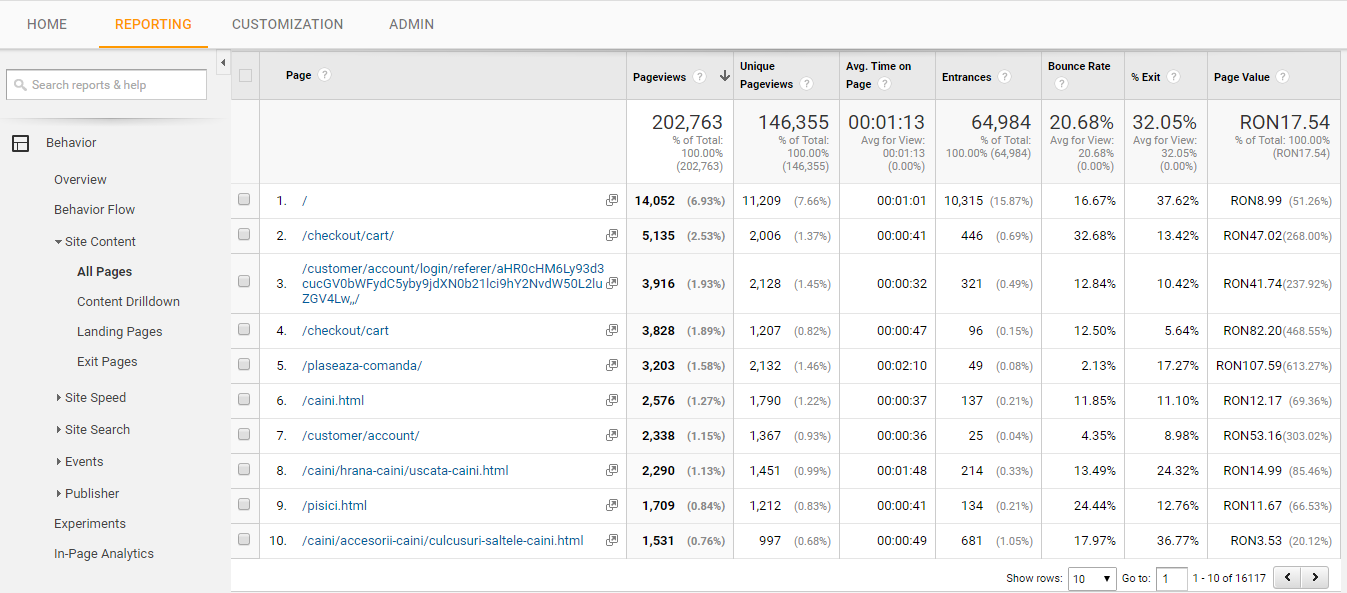
Source: Canonicalized
Segmentation can help you see more of what you’re interested in.
You can also add secondary dimensions such as device category or traffic source to get a greater insight of why visitors leave your site.
The Google Analytics extension for Google Chrome can display real-time data for the page you are viewing.

See more: How to setup Shopify Google Analytics conversion tracking
4. Why Is Exit Rate Important?
A high exit rate typically indicates a problem with your conversion funnel. As a result, you should select the metric you optimize for based on the trouble spot you are attempting to solve.

Source: CXL
Exit rates indicate potential areas for improvement.
Consider this ecommerce website, most users will arrive at the site from the homepage.
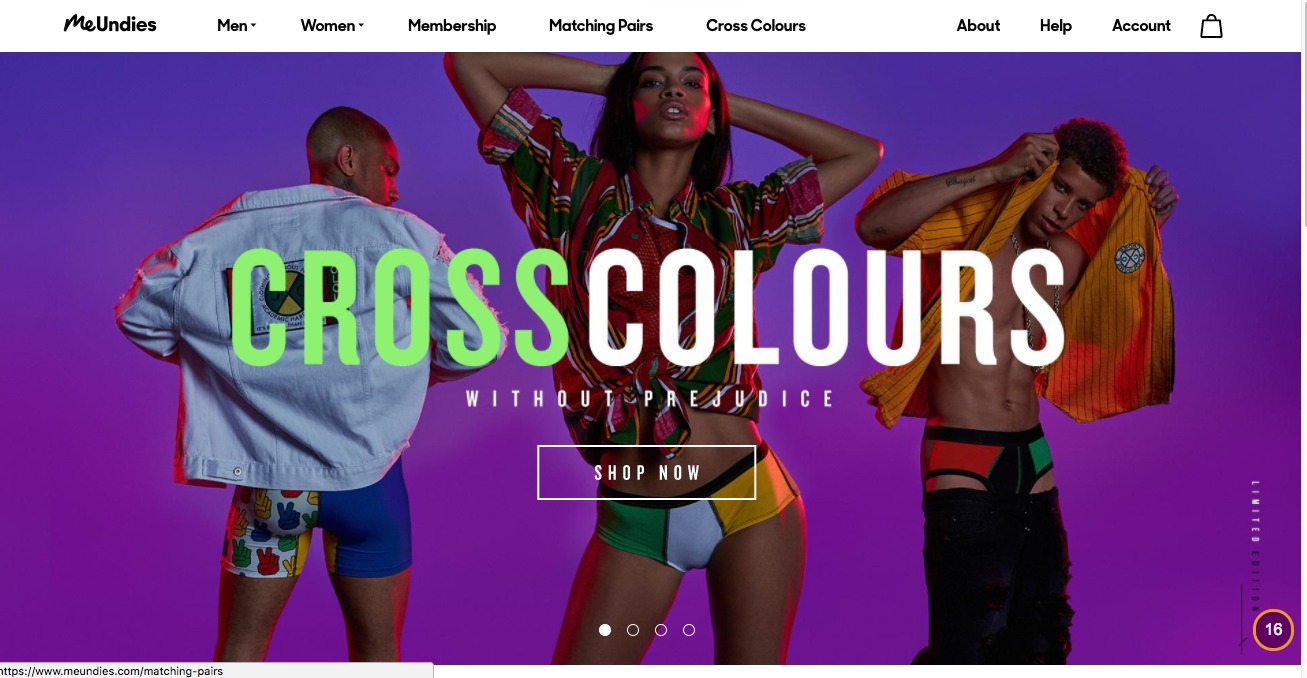
They will then proceed to product pages featuring a product they wish to purchase.
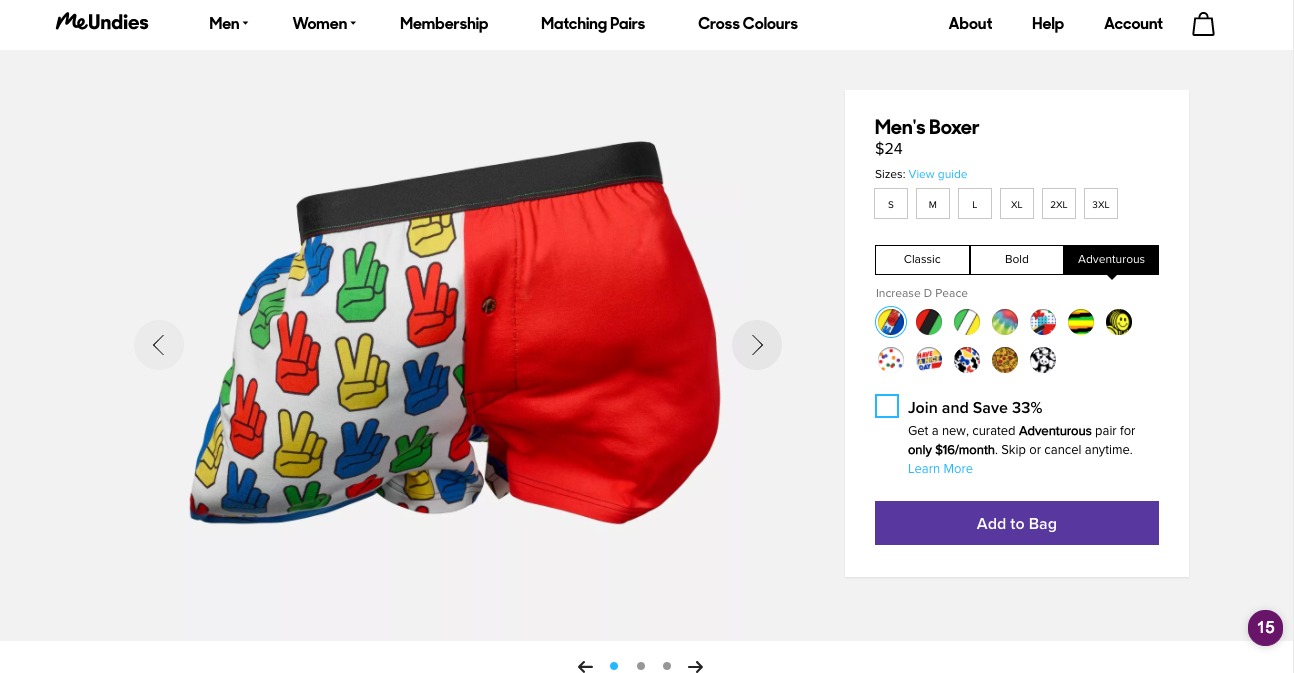
Your exit rate here will provide further details. If your exit rate on a page like this is high, it implies that something is wrong with either your product page or the product itself, causing initially interested shoppers to abandon after checking out your products.
5. What Causes High Exit Rate and How To Decrease Exit Rate?
What Causes High Exit Rates?
- Distracting Content: music, video, and intrusive pop-ups can all lead to early exits.
- Slow load speed: visitors (particularly mobile users) will abandon the site after roughly 3 seconds.
- Poor UI/UX: Poor page design and layout can confuse your users.
- Issues with navigation: confusing pathing and/or a lack of related content means “dead end”
See more: Mobile Site Optimization Is Your Key To Higher eCommerce Sales
How To Decrease Exit Rate?
If visitors find the info they need and then leave the page, the exit rate can be significant. When analyzing bounce and exit rates, keep the context in mind at all times.
First, find out why people are leaving. You can start by making changes, such as adding appealing pictures or inspiring content.
If you run an online store, you should focus on optimizing your exit pages.
Use links to connect products and direct users to different areas of the store.
This does not merely entail correcting navigation or site design errors. Instead, you might want to reconsider your conversion funnel.
For example, it is commonly assumed that eCommerce confirmation pages have high exit rates; however, do they have to? Obviously not. There is always room for growth. For example, you could wish to link to related products that the consumer might be interested in to help them progress further down the funnel.
In an ideal world, you will take them through a funnel that will finally lead to a sale.
Second, always offer your customers a reason to stay.
Increasing their curiosity and making them want to explore rather than leave will do wonders for your business!
Do you believe people go to the mall solely to shop?
Not all of them! Most people go there because it is a relaxing place.
This is what you should strive towards on your website or online business.
See more: Web Design Tips & Tricks For A Professional Site That Converts
III. Comparison Between Bounce Rate vs Exit Rate
Bounce and exit rates are two separate and distinct concepts. DO NOT MIX THEM UP.
- The first page a visitor enters is referred to as the bounce rate, and the final page he visits before leaving is referred to as the exit rate.
- Bounces are ALWAYS one-page visits; departures can be many pages.
- A high exit rate does not necessarily imply a high bounce rate (people may have arrived at that page from elsewhere on the site before leaving);
- A low exit rate may be indicative (people must be moving on to other pages on the site before leaving);
- The bounce rate is a negative for most websites (it indicates that the landing page is irrelevant to your visitors).
Both of these metrics are used to determine how visitors are interacting with your site, but bounce rate reflects how effectively your site matches viewer expectations, whilst exit rate tells which pages were seen most recently. In general, bounce rate is a more effective measure for improving site content.

Source: Mixed Analytics
Let’s start with the definitions:
- Bounce Rate: the percentage of single-engagement sessions (entrances)
- Exit Rate: the percentage of exits on a page (pageviews)
Hence, a bounce occurs whenever a person enters the page and then exits without visiting another page on the website or interacting with any of the page’s contents (e.g. commenting).
Exit rate, on the other hand, compares the number of users who leave your website after landing on a page to the total number of views received by the page.

Source: CXL
After all, the fundamental objective of all metrics is the same: to determine the percentage of users who leave a page after opening it.
The exit rate is the percentage of visits that were the last ones in the session, whereas the bounce rate is the percentage of visits that were the only one in the session.
This means that bounces are only recorded when a user exits immediately from the page they were on, whereas exit rates are tracked regardless of a user’s previous activity on your website. As a result, while all bounces are exits, not all exits are bounces.
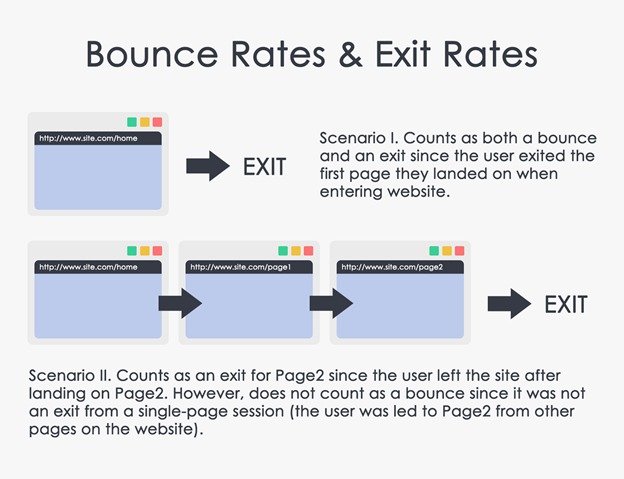
Source: CXL
Consider a simple website with four pages: Home Page, Product Page, Confirmation Page, and Contact Us Page. Over the course of a week, we can assume five different visits to this website.
- Monday: New Visitor > Home Page > EXIT
- Tuesday: New Visitor > Home Page > Product Page > Confirmation Page > EXIT
- Wednesday: New Visitor > Home Page > Product Page > EXIT
- Thursday: New Visitor > Contact Us Page > EXIT
- Friday: New Visitor > Confirmation Page > Contact Us Page > EXIT
Out of the above five sessions, there were only two bounces.
Despite the fact that visitors exited the site on all five days, bounces occurred only on Monday and Thursday since those were the only two days where the visitor exited as soon as they entered the site. Every other day, the visitor went through at least two pages before leaving.
The following Google Analytics report would be generated for these five sessions.
- HOMEPAGE: 3 entrances | 3 page views | 33% bounce rate | 33% exit rate
- PRODUCT PAGE: 0 entrances | 2 page views | 0% bounce rate | 50% exit rate
- CONFIRMATION PAGE: 1 entrance | 2 page views | 0% bounce rate | 50% exit rate
- CONTACT US PAGE: 1 entrance | 2 page views | 100% bounce rate | 100% exit rate
Thus, a high exit rate does not always imply a high bounce rate because people may have arrived at the page from another page on the site. Similarly, a low bounce rate does not imply a low exit rate, because bounce rate only accounts for exits that occur on the first page the user visits on.
Remember that exits might be multiple-page visits, whereas bounces are always one-page visits.
See more: Best Shopify Landing Page Checklist for Increasing Conversion
Conclusion
Keep an eye on the user journeys
For the more technically oriented, we recommend installing live tracking/heat-mapping applications such as Inspectlet, Hotjar, Clicktale, and so on.
These will assist you in determining where users hang out, where they click, and better understanding their experience.
Consider including a call to action if you believe your visitors are unsure what to do next. Finally, optimization is required, particularly for pages that do not generate clicks.
To keep in mind
Take bounce rate and exit rate as a warning sign that something is wrong with your site, but not as a rule.
It is always dependent on other aspects that must be considered before taking action.
Consider both of these useful, like a light bulb that turns on when your user’s satisfaction is called into question.
Finally, which metric you choose is determined by the context of your analysis and your optimization objectives.
However, avoid focusing on aggregate bounce and inaccuracy rates. Instead, segment your data and target specific pages to identify gaps in your funnel and problem areas.